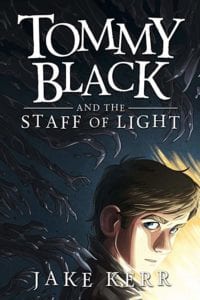
my self-publishing journey
In my last column on self-publishing I described the various grassroots methods I was using to get my middle grade novel, Tommy Black and the Staff of Light, noticed. It is important to note that my theory of a spark that lights a fire requires that the spark actually catch. It is ultimately ineffective if the spark lights but doesn’t spread, eventually dying out. This is exactly what happened to me, unfortunately.
The simple truth is that my spark theory turned out to have a fatal flaw—the only sparks that really spread are those that are actually fires in and of themselves. An example of these kinds would be a major star or author saying nice things about your book. That is the kind of spark that moves large numbers of people to actually buy your book. I’ll discuss the importance of actual sales in a future column, but for now just note that my theory that a broad amount of “little exposure” could lead to something bigger turned out to be false.
That led me to advertising. I put a lot of time, effort, and money into advertising with Facebook, Twitter, and even Linkedin. Ultimately these didn’t do much, but the exercise is revealing in why it didn’t.
What I learned from Facebook advertising is that you definitely move people to click through and then buy your book, but the cost of doing so generally is higher than the money you subsequently make from the sale of the book. For example, Tommy Black is priced at $3.99. For every $5.00 in advertising I made one sale. I was spending $5.00 to lose over $2.00.
I optimized my ad in a number of ways, including testing multiple headlines, body text, and images. My most effective ad still was losing me about a $1.00 for every $5.00 I was spending. Theoretically I could have considered this a marketing investment and hoped that by spending a few hundred dollars the sales numbers would have made my book reach a top 100 list and then sell better, but that kind of investment was a bit too much for me at that point.
I tried something different with Twitter—I aimed for building my mailing list with something called Leads on Twitter; this was a way for me to have people who were interested in my book click through and get more information via email. This worked pretty well and cost me about 50 cents for every email.
Of course the real question was whether I could mail those people regularly and turn them into buyers and long-term fans. The jury is still out, but the quality of the mailing list is much lower than if the people had signed up after having read my book—the number of people who open the emails and then click through to my website or the buy pages is low. Still, the people didn’t unsubscribe en masse, and each name is a potential sale, so I was okay with it.
The only problem was that this still wasn’t generating sales.
I next tried Google and Bing for advertising via search, specifically for people who liked the Harry Potter and Percy Jackson books. Much like Facebook advertising, the sales generated from the clicks were lower than the cost of the ad. Also like Facebook, I ran dozens of ad variations looking for one that might actually give me a positive return on my investment. I never found it.
Finally, I had a $50 ad credit on LinkedIn, so I targeted an ad exclusively to librarians. I figured that librarians would like to see an ad about a fun new kids book. While the click through rate was good, as was the exposure, sales were again minimal.
At this point I realized that my entire theory of book marketing, which I had modeled after a traditional “swing for the fences” model, was simply not working. I had to re-think everything and do some research into what the professionals were doing. So I started from scratch and spent a few weeks doing nothing more than studying the true masters of self-publishing: Romance authors. In my next column, I will share what I learned.
